
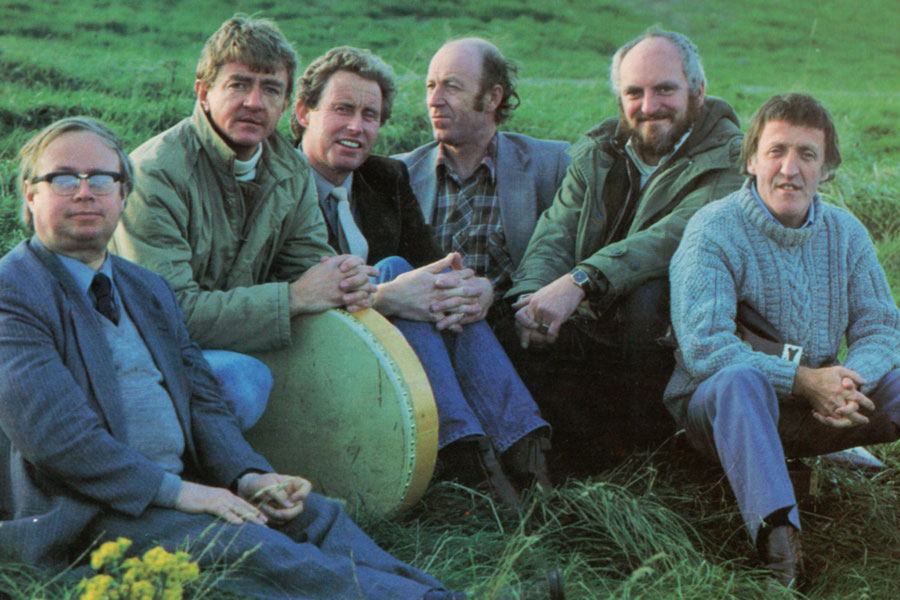
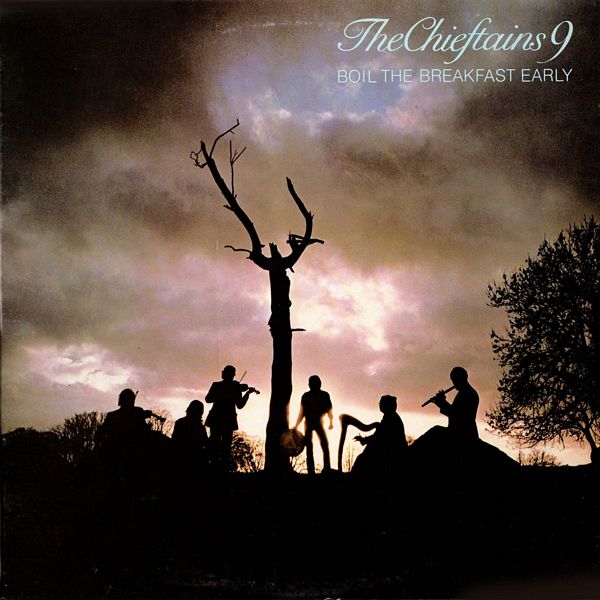 |
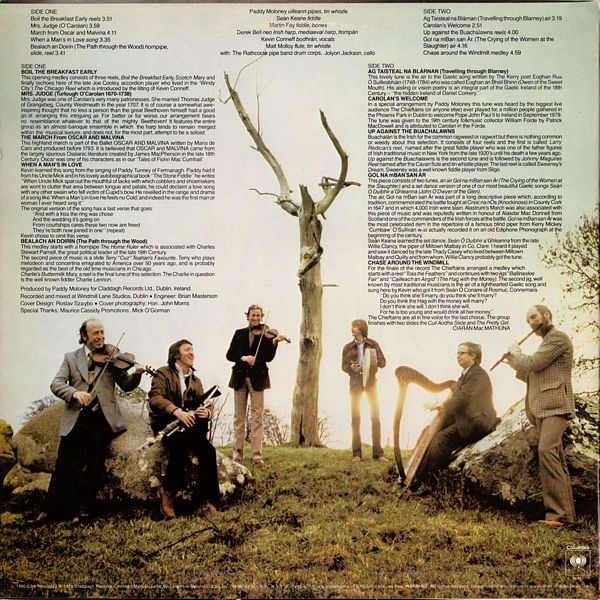
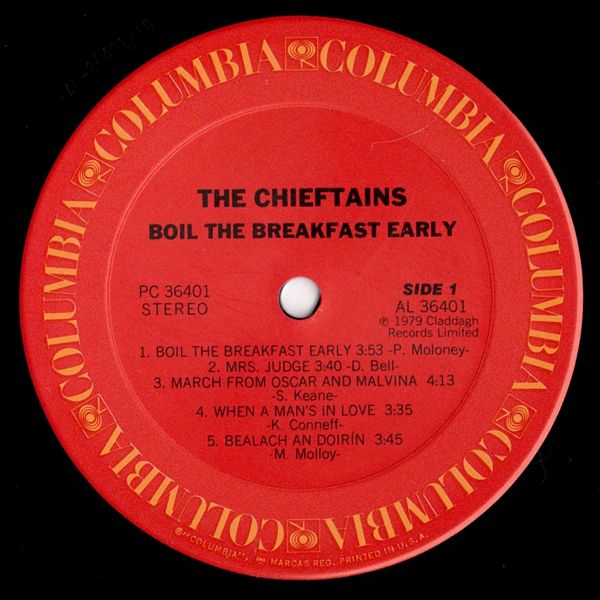
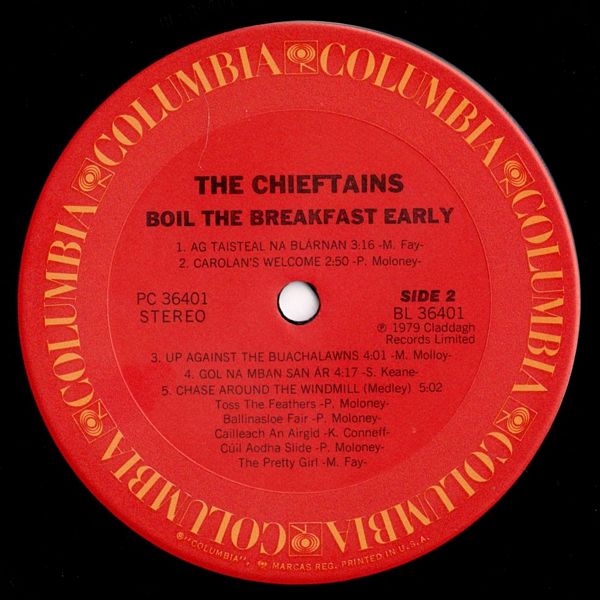 |
Sleeve Notes
BOIL THE BREAKFAST EARLY — This opening medley consists of three reels, Boil the Breakfast Early, Scotch Mary and finally (echoes here of the late Joe Cooley, accordion player who lived in the 'Windy City') The Chicago Reel which is introduced by the lilting of Kevin Conneff.
MRS. JUDGE (Turlough O'Carolan 1670-1738) — Mrs. Judge was one of Carolan's very many patronesses. She married Thomas Judge of Grangebeg, County Westmeath in the year 1707. It is of course a somewhat awe-inspiring thought that no less a person than the great Beethoven himself had a good go at arranging this intriguing air. For better or for worse, our arrangement bears no resemblance whatever to that of the mighty Beethoven! It features the entire group as an almost-baroque ensemble in which the harp tends to remain merged within the musical texture, and does not, for the most part, attempt to be a soloist.
THE MARCH from OSCAR AND MALVINA — This highland march is part of the Ballet OSCAR AND MALVINA written by Maria de Caro and produced before 1793. It is believed that OSCAR and MALVINA came from the largely spurious Ossianic literature created by James MacPherson in the late 18th Century. Oscar was one of his characters as in our 'Tales of Fionn Mac Cumhail'.
WHEN A MAN'S IN LOVE — Kevin learned this song from the singing of Paddy Tunney of Fermanagh. Paddy had it from his Uncle Mick and in his lovely autobiographical book "The Stone Fiddle" he writes "When Uncle Mick spat out the mouthful of tacks with which cobblers and shoemakers are wont to clutter that area between tongue and palate, he could declaim a love song with any other swain who fell victim of Cupid's bow. He reveled in the range and drama of a song like 'When a Man's in love He feels no Cold,' and indeed he was the first man or woman I ever heard sing it!"
The original version of the song has a last verse that goes:
"And with a kiss the ring was chose
And the wedding it's going on
From courtships cares these two now are freed
They're both now joined in one" (repeat)
Kevin chose to omit this verse.
BEALACH AN DOIRÍN (The Path through the Wood) — This medley starts with a hornpipe The Home Ruler which is associated with Charles Stewart Parnell, the great political leader of the late 19th Century.
The second piece of music is a slide Terry "Cuz" Teahan's Favourite. Terry who plays melodeon and concertina emigrated to America over 50 years ago, and is probably regarded as the best of the old time musicians in Chicago.
Charlie's Buttermilk Mary, a reel is the final tune of this selection. The Charlie in question is the well-known fiddler Charlie Lennon.
AG TAISTEAL NA BLÁRNAN (Travelling through Blarney) — This lovely tune is the air to the Gaelic song written by The Kerry poet Eoghan Rua Ó Suilleabháin (1748-1784) who was called Eoghan an Bhéil Bhinn (Owen of the Sweet Mouth). His aisling or vision poetry is an integral part of the Gaelic Ireland of the 18th Century — "the hidden Ireland of Daniel Corkery."
CAROLAN'S WELCOME — In a special arrangement by Paddy Moloney this tune was heard by the biggest live audience The Chieftains (or anyone else) ever played for, a million people gathered in the Phoenix Park in Dublin to welcome Pope John Paul II to Ireland in September 1979. The tune was given to the 19th century folkmusic collector William Forde by Patrick MacDowell and is attributed to Carolan in the Forde.
UP AGAINST THE BUACHALAWNS — Buachalán is the Irish for the common ragweed or ragwort but there is nothing common or weedy about this selection. It consists of four reels and the first is called Larry Redican's reel, named after the great fiddle player who was one of the father figures of Irish traditional music in New York from the late 1920's until his death a few years ago. Up against the Buachalawns is the second tune and is followed by Johnny Maguires Reel named after the Cavan flute and tin whistle player. The last reel is called Sweeney's Dream, Sweeney was a well-known fiddle player from Sligo.
GOL NA mBAN SAN ÁR — This piece consists of two tunes, an air Gol na mBan san Ár (The Crying of the Women at the Slaughter) and a set dance version of one of our most beautiful Gaelic songs Seán Ó Duibhir a'Ghleanna (John O'Dwyer of the Glen).
The air, Gol na mBan san Ár was part of a long descriptive piece which, according to tradition, commemorated the battle fought at Cnoc na nOs (Knockinoss) in County Cork in 1647 and in which 4,000 Irish were slain. Alastrum's March was also associated with this piece of music and was reputedly written in honour of Alasdar Mac Donnell from Scotland one of the commanders of the Irish forces at the battle. Gol na mBan san Ár was the most celebrated item in the repertoire of a famous blind piper from Kerry Mickey 'Cumbaw' O'Sullivan who actually recorded it on an old Ediphone Phonograph at the beginning of the century.
Seán Keane learned the set dance, Seán Ó Duibhir a'Ghleanna from the late Willie Clancy, the piper of Miltown Malbay in Co. Clare. I heard it played and saw it danced by the late Thady Casey who lived between Miltown Malbay and Quilty and from whom, Willie Clancy probably got the tune.
CHASE AROUND THE WINDMILL — For the finale of the record The Chieftains arranged a medley which starts with a reel "Toss the Feathers" and continues with two jigs "Ballinasloe Fair" and "Cailleach an Airgid" (The Hag with the Money). The second jig, well known by most traditional musicians is the air of a lighthearted Gaelic song and sung here by Kevin who got it from Seán Ó Conaire of Rosmuc, Connemara.
"Do you think she'll marry, do you think she'll marry?
Do you think the Hag with the money will marry?
I don't think she will, I don't think she will.
For he is too young and would drink all her money!"
The Chieftains are all in fine voice for the last chorus. The group finishes with two slides the Cuil Aodha Slide and The Pretty Girl.
Ciarán Mac Mathúna